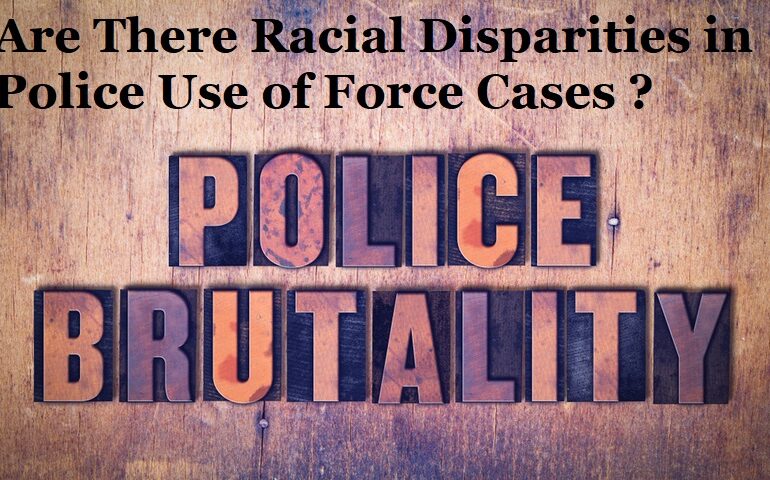
The truth behind racial disparities in fatal police shootings
White police officers are not more likely to shoot minorities citizens than non-white officers
by Michigan State University – MSU Link
Newswise — EAST LANSING, Mich. – Reports of racially motivated, fatal shootings by police officers have garnered extensive public attention and sparked activism across the nation. New research from Michigan State University and University of Maryland reveals findings that flip many of these reports on their heads – white police officers are not more likely to shoot minorities citizens than non-white officers.
“Until now, there’s never been a systematic, nationwide study to determine the characteristics of police involved in fatal officer-involved shootings,” said Joseph Cesario, co-author and professor of psychology at MSU. “There are so many examples of people saying that when black citizens are shot by police, it’s white officers shooting them. In fact, our findings show no support for the idea that white officers are biased in shooting black citizens.”
The findings – published in Proceedings of the National Academy of Sciences, or PNAS – are based on an independent database Cesario and his team created that catalogued each police shooting from 2015. The team – led also by co-author David Johnson from University of Maryland – contacted every police department that had a fatal police shooting to get the race, sex and years of experience for every officer involved in each incident. The team also leveraged data from police shooting databases by The Washington Post and The Guardian.
“We found that the race of the officer doesn’t matter when it comes to predicting whether black or white citizens are shot,” Cesario said. “If anything, black officers are more likely to shoot black citizens, but this is because black officers are drawn from the same population that they police. So, the more black citizens in a community, the more black police officers there are.”
The data show that it’s not racial bias on behalf of white officers relative to black officers when it comes to fatal shootings, and that’s good news. The bad news, Cesario said, are that internal policy changes, such as diversifying police forces, may not reduce shootings of minority citizens.
Beyond officer race, the team drew other conclusions about details related to racial disparities in fatal officer shootings.
“Many people ask whether black or white citizens are more likely to be shot and why. We found that crime rates are the driving force behind fatal shootings,” Cesario said. “Our data show that the rate of crime by each racial group predicts the likelihood of citizens from that racial group being shot. If you live in a county that has a lot of white people committing crimes, white people are more likely to be shot. If you live in a county that has a lot of black people committing crimes, black people are more likely to be shot. It is the best predictor we have of fatal police shootings.”
By connecting the findings of police officer race, victim race and crime rates, the research suggests that the best way to understand police shootings isn’t racial bias of the police officer; rather, by the exposure to police officers through crime.
The vast majority – between 90% and 95% – of the civilians shot by officers were actively attacking police or other citizens when they were shot. Ninety percent also were armed with a weapon when they were shot. The horrific cases of accidental shootings, like mistaking a cell phone for a gun, are rare, Cesario said.
“We hear about the really horrendous and tragic cases of police shootings for a reason: they’re awful cases, they have major implications for police-community relations and so they should get attention,” Cesario said. “But, this ends up skewing perceptions about police shootings and leads people to believe that all fatal shootings are similar to the ones we hear about. That’s just not the case.”
One thing that was surprising to the researchers, Cesario said, were the number of mental health cases that resulted in fatal officer shootings.
“It was truly striking and we didn’t recognize just how many there were,” he said. “This shows how underappreciated mental health is in the national discussion of fatal officer shootings.”
Nearly 50% of all fatal shootings involving white civilians were because of mental health; it also accounted for nearly 20% of black civilians and 30% of Hispanics. These included two types of mental health cases: the first was “suicide by cop,” in which civilians intentionally antagonize the police because they want an officer to kill themselves; the second was a result of mental disorders, such as when a civilian is suffering from schizophrenia and poses a threat to officers.
Although white officers are not more likely than black officers to shoot black citizens when looking at all fatal shootings, the data are too uncertain to draw firm conclusions once different subtypes of shootings, such as shootings of unarmed citizens, are examined. This is because these types of shootings are too rare for strong conclusions to be drawn.
Cesario said that better record keeping – such as the FBI’s National Use-of-Force Data Collection, which launched in 2019 – will enable researchers to understand police shootings in finer detail.
(Note for media: Please include a link to the original paper in online coverage: https://www.pnas.org/cgi/doi/10.1073/pnas.1903856116)
###
Michigan State University has been working to advance the common good in uncommon ways for 160 years. One of the top research universities in the world, MSU focuses its vast resources on creating solutions to some of the world’s most pressing challenges, while providing life-changing opportunities to a diverse and inclusive academic community through more than 200 programs of study in 17 degree-granting colleges.